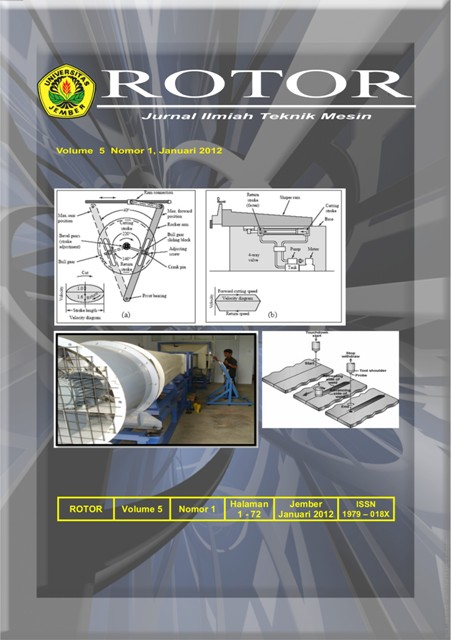ANALISIS SIFAT MEKANIK HASIL PENGELASAN ALUMINIUM AA 1100 DENGAN METODE FRICTION STIR WELDING (FSW)
Abstract
Aluminum and aluminum alloys have properties that are less well when coMPared to steel, such as specific heat and has a high conductivity. They are also easily oxidized and form an aluminum oxide Al2O3 which have a high melting point. Consequently, when they are welded the fusion between base and weld metal will be blocked. Moreover, if the cooling process is too fast it will form a smooth cavity ex-pouch of hydrogen. Friction stir welding (FSW) is a challenging alternative for joining aluminum alloy. In FSW, process occur in the solid state (solid state joining). In this research, some attempts were carried out to find the best quality of welding, in term of mechanical properties and microstructure. Tool rotation speed was varied at 780, 980, 1120 rpm. Whereas, feed rate used was keep constantly at 15 mm/min. The material to be welded is a- 4.0 mm thick aluminum AA 1100 strips. Result showed that the highest strength obtained is 56.528 MPa at 1120 rpm and the lowest strength obtained is 38.472 MPa at 980 rpm. Wormholes and the lack of penetration defects are the main things that reduce the tensile strength. From micro observations known on the grains shape of the stir zone, FeAl3 particles is spread more evenly in matrix of Al  due to the stir process during the welding process. Hardness tests showed that the weld metal is softer than the base metal.
Keywords: Aluminum, welding, FSW


